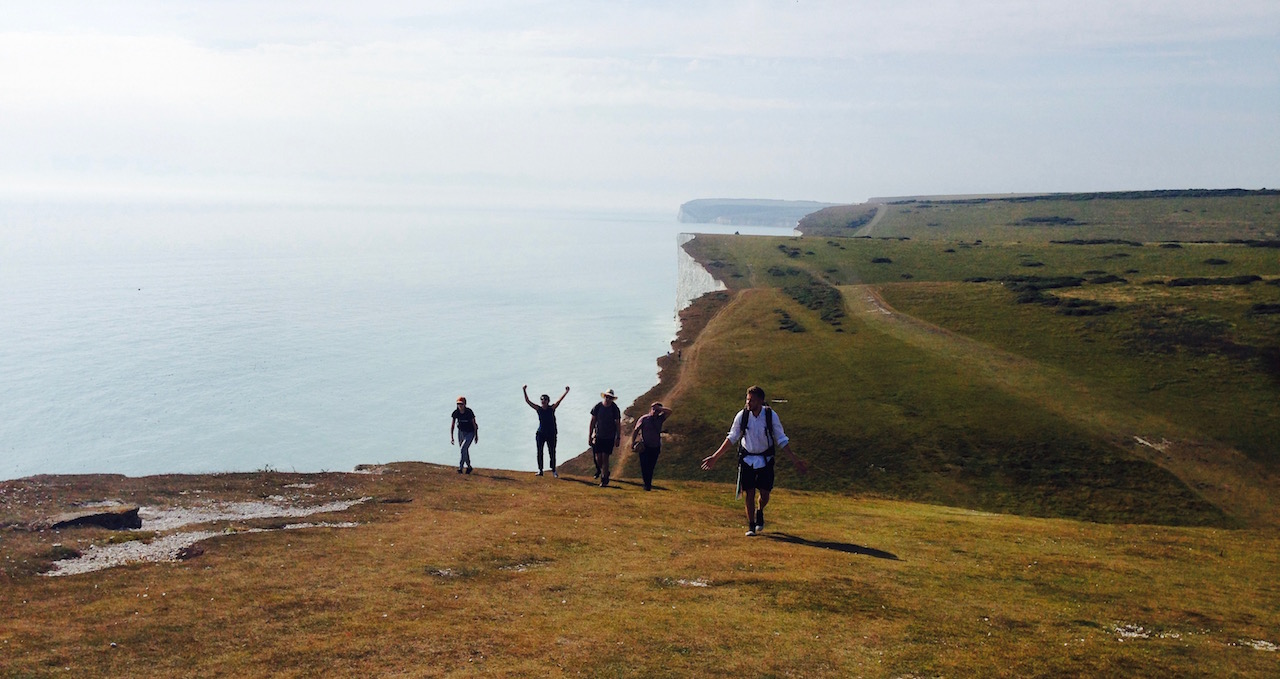We recently had our first ever awayday, and walked 12 miles in the process.
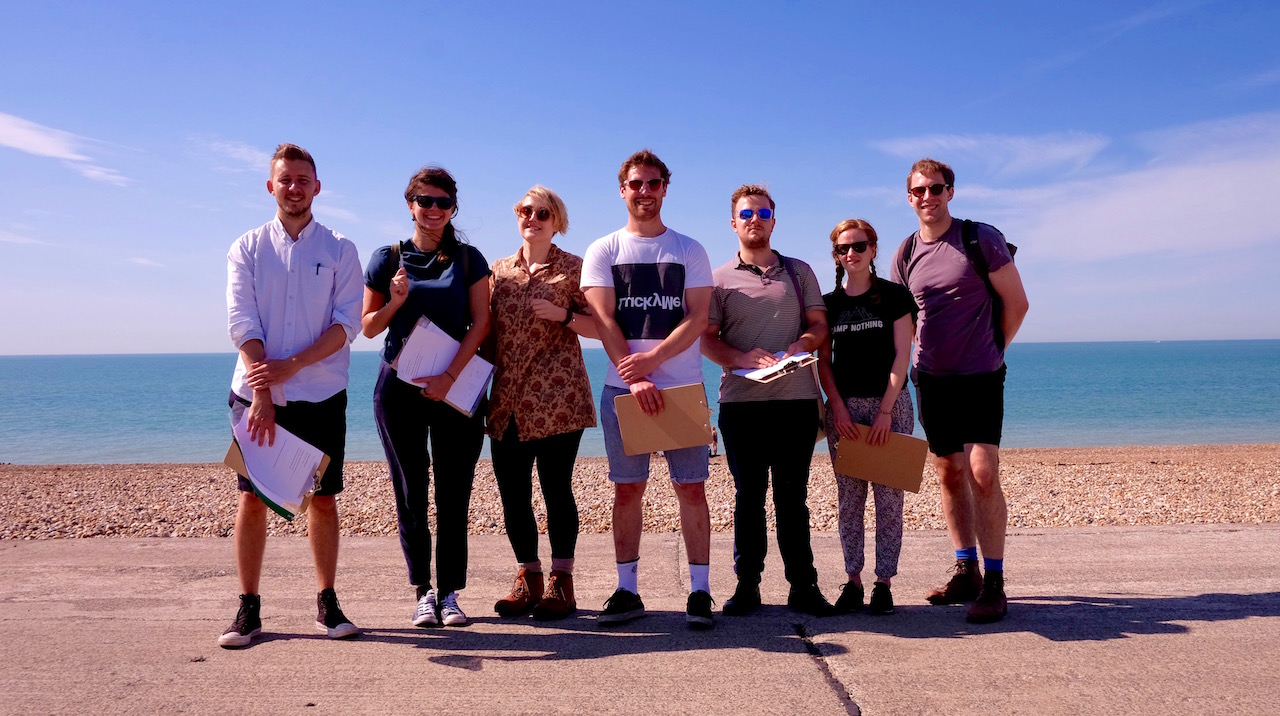
The Science Practice team at the beach.
Like many companies, there are some things about the way we work, our aims and ambitions, and our company culture that never manage to get spoken about. The day-to-day pressures of projects and clients take over, preventing meaningful discussion about possible changes to working practices and directions within the company.
One way of encouraging these kinds of discussions are through an awayday - literally a day away from the office (and the laptops, projects and clients that go with it) where people are free and comfortable speaking their mind.
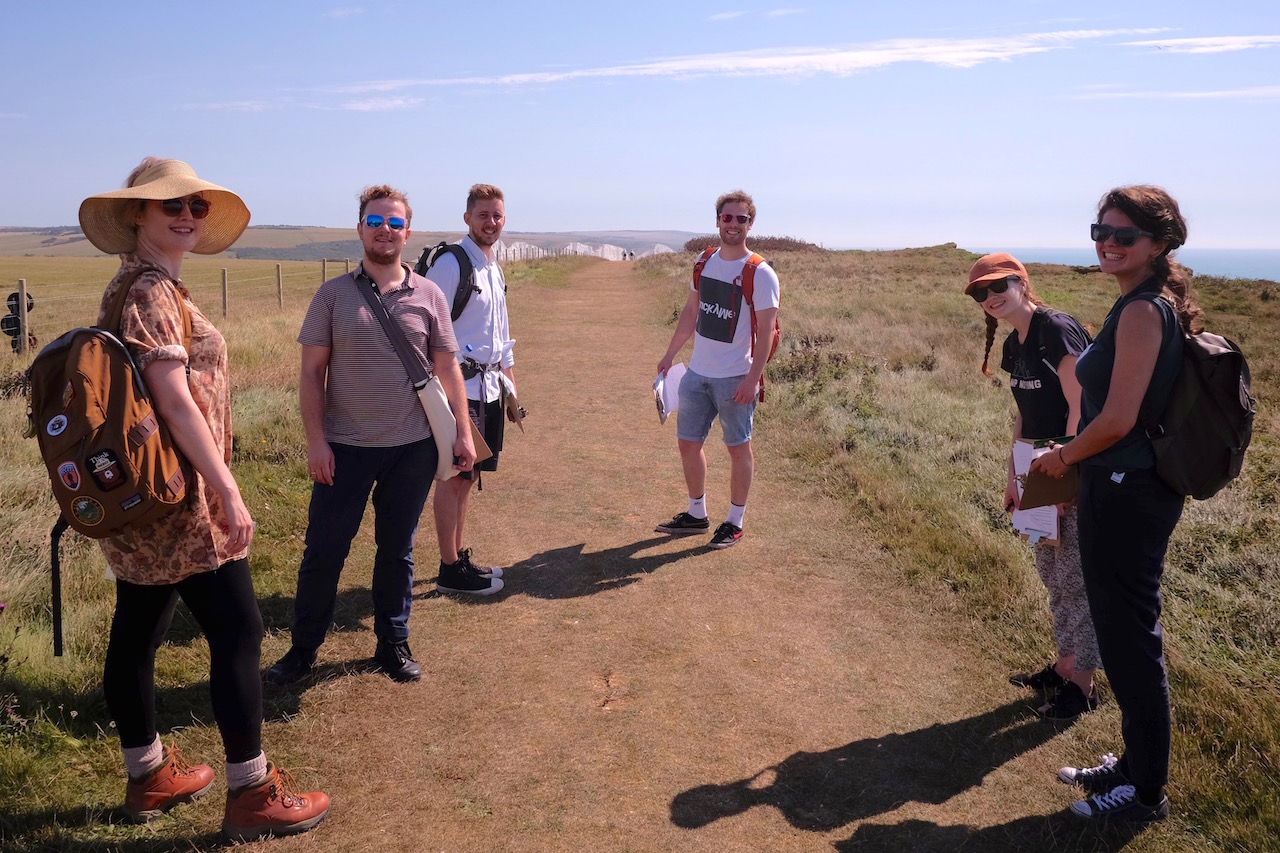
Setting off on our walkshop 🌞😎🗺🚶🏼🏖📋.
Taking inspiration from the walkshops run by lecturers at the Steps Centre at the University of Sussex, we decided to take our awayday outside on a day’s walk. A walkshop is described as a ‘walking workshop’, and is based on the idea that the process of walking while talking helps to introduce an atmosphere of openness, and facilitates easy flowing conversation.
Looking for good walks accessible from London, we found the walk across Seven Sisters Cliffs from Seaford to Eatbourne. The walk has some really great views, and is easy to navigate being one stage of the South Downs Way which traverses the entire width of the South Downs National Park.
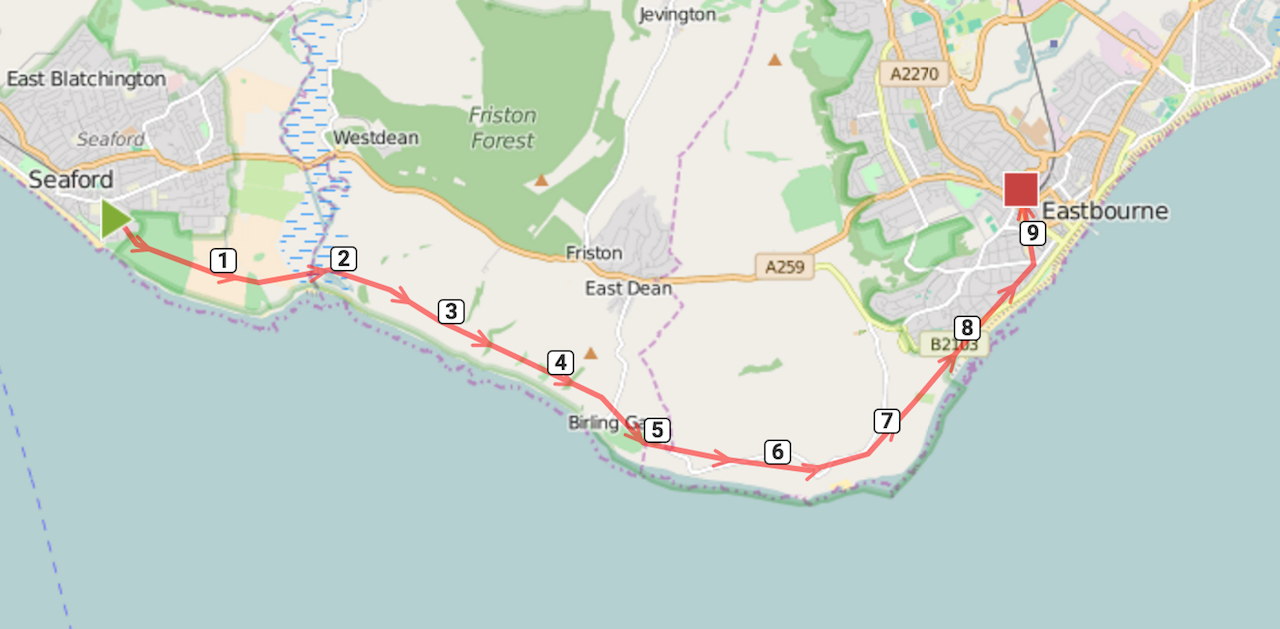
Our planned route.
Awaydays need different levels of planning depending on their intended outcomes. As we were looking to have constructive conversations and walking a fairly substantial distance, we decided to plan out some specific discussion topics and activities.
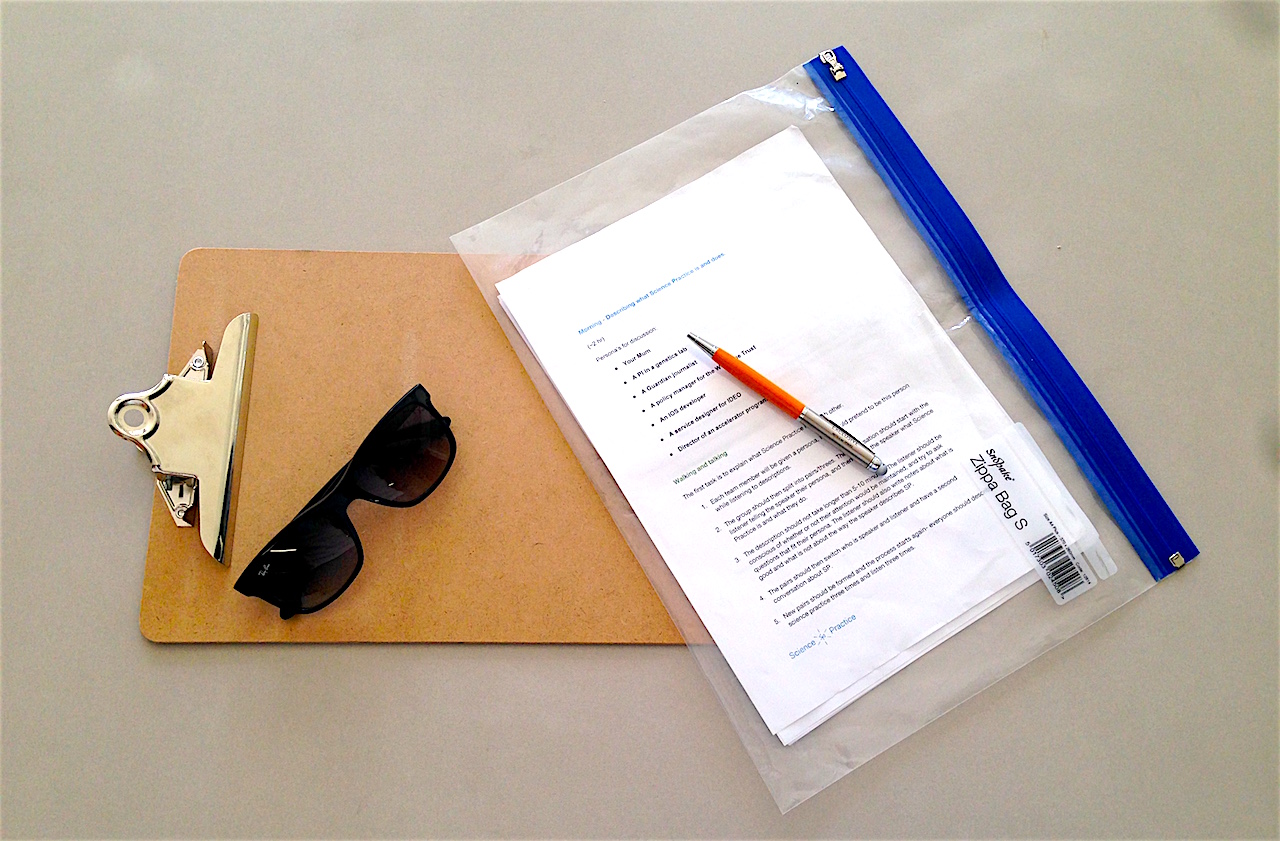
Essential awayday equipment.
We decided on three topics for the day: ‘Communicating about Science Practice’, ‘The 5 year plan’ and ‘Roles at Science Practice’. While walking people naturally form and break groups, so we designed activities that worked with this dynamic. We had one-on-one interviews and conversations, and also did wrote down some ideas beforehand to ease the amount of writing needed while walking.

Walking and talking.
Each of the cliffs of the Seven Sisters, has a ‘brow’ and a ‘bottom’ essentially meaning that there are seven ups and seven downs, some of which are quite steep. Bearing this in mind we designed some ‘thinking’ time for the uphill sections, discussions on the downhill part, and breaks to have full group conversations (and lunch) at the peaks.
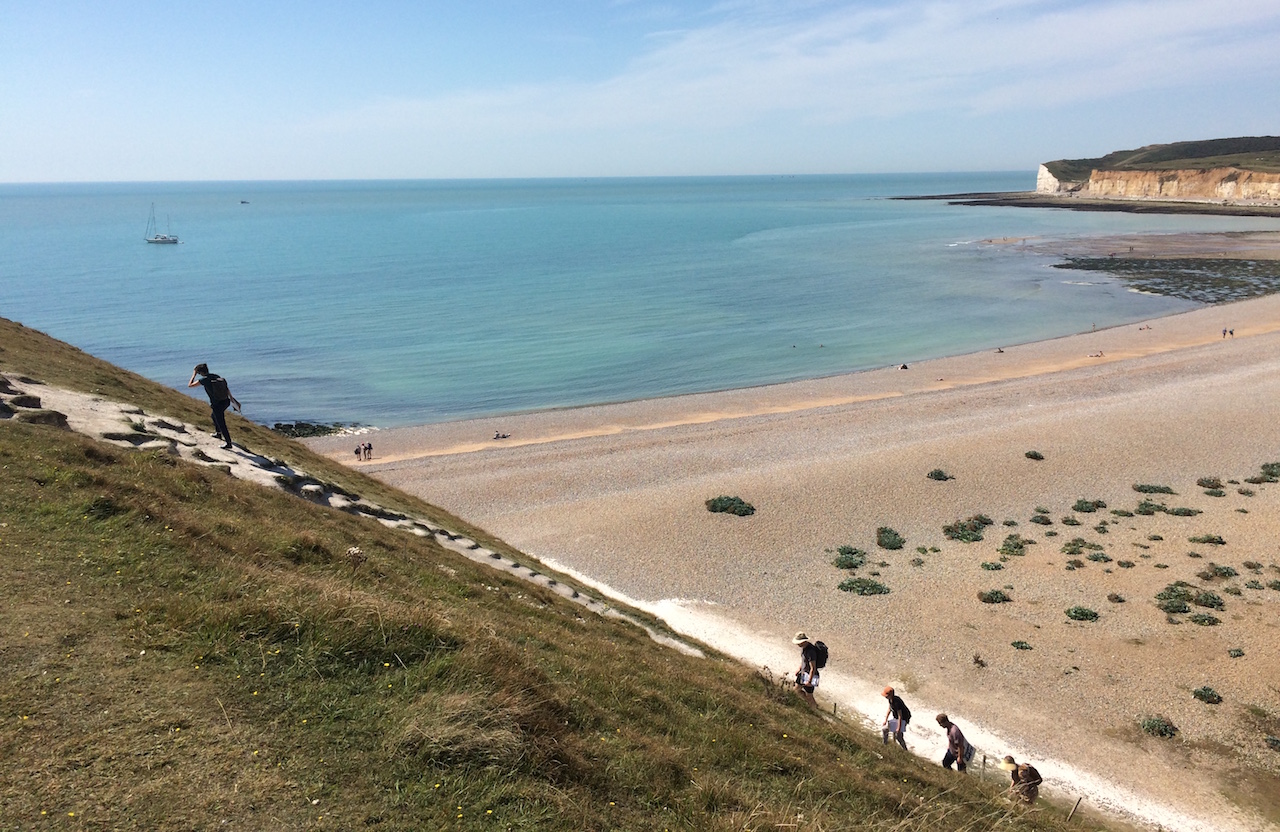
Thinking time.
We checked the weather forecast a week in advance to give us as good a chance of sun as possible. It turns out that the day we chose was one of the hottest days of August, with unrelenting, beautiful blue skies.
We set off from Seaford station, with clipboards in hand to begin our first activity. It genuinely felt as if everyone had left their normal responsibilities in London and it was refreshing to speak about the issues that had been hanging in the backs of our minds. It did really help that the views from the tops of the cliffs are fantastic, as well as the downs providing some opportunities to get our feet wet!
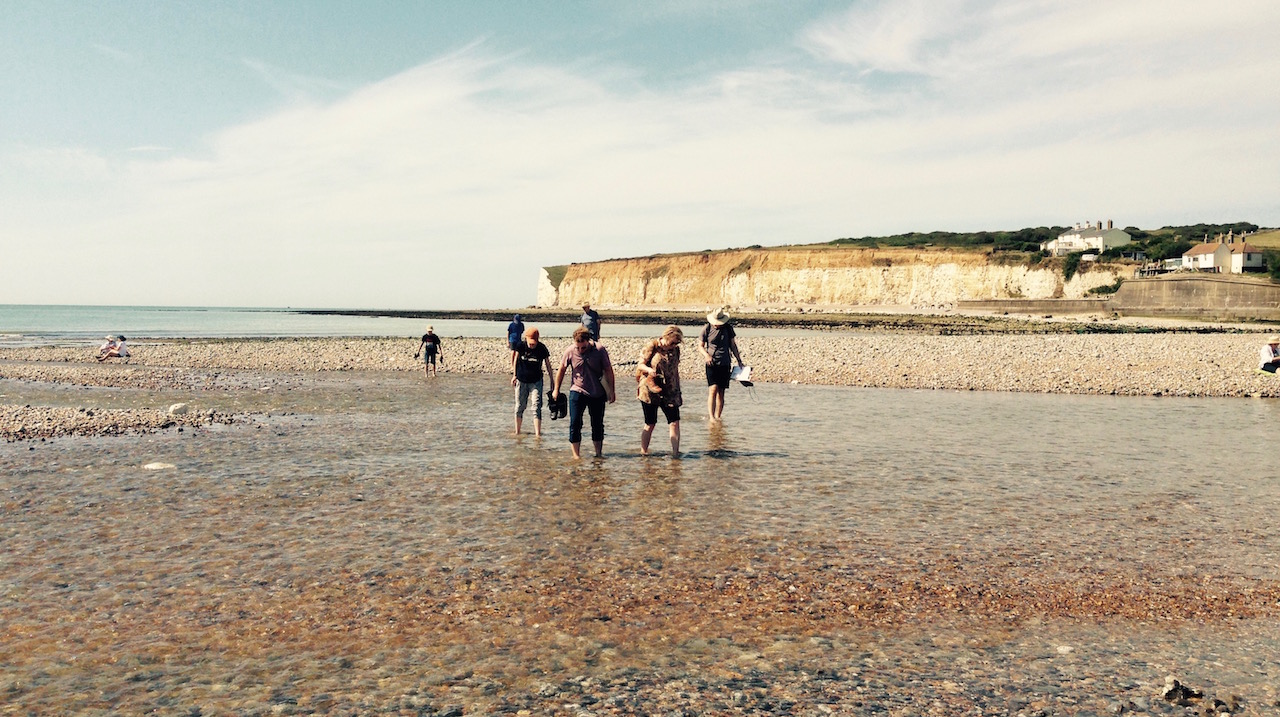
Crossing the Cuckmere River.
During our discussion at lunch, it did dawn on us that we hadn’t yet got half way and it was nearly 3 o’clock! After this point we did have to walk a bit faster than was intended. Although conversations continued, it was harder to bring everyone back together to share thoughts.
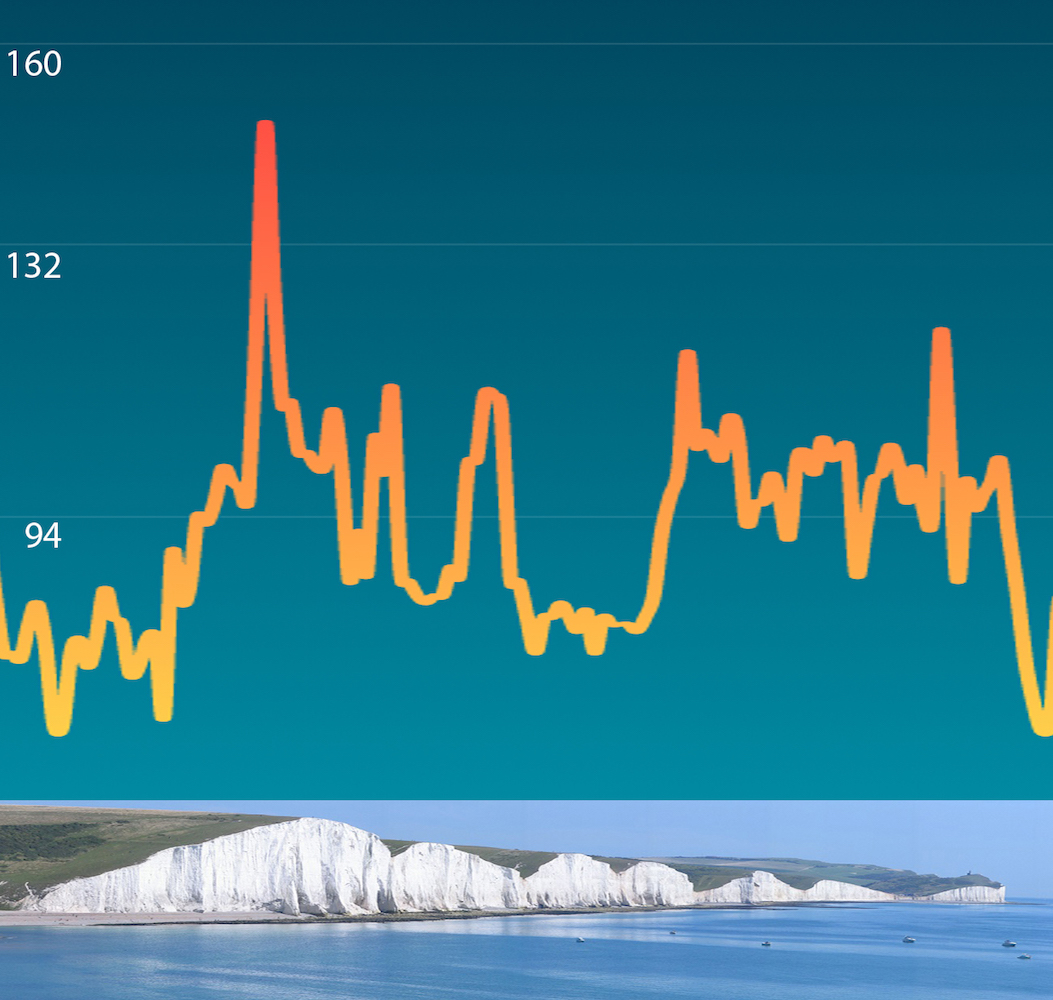
Tempest measured her heart rate as we crossed the cliffs.
The walk ended in Eastbourne at a pub by the station (where we ate bowls of chips faster than should be humanly possible). We were tired, but happy, with a satisfying feeling of a day’s exercise and thought.
Overall we found the format of a walking workshop a useful and fun experience. After reviewing our notes, thoughts and conversations in a short meeting the day after, we found we had come up with some novel ideas and concrete actions that should have a positive impact on Science Practice.
We also learnt a few lessons that could make a big difference for anyone else planning a similar workshop:
-
12 miles is a little too far: The distance meant that there wasn’t enough time to sit down and discuss our conversations fully during the walk.
-
A walk with some shade would have worked better: While it feels crazy to be complaining about the sun in the UK, the constant heat did make it hard to concentrate at times, and gave us some very pink faces by the train home.
-
The clipboards and preparation beforehand helped a lot: A walkshop doesn’t really work well with lots of writing so a bit of preparation to minimise this is useful, however it is important to take some notes during conversations to make sure important points aren’t forgotten.
-
Responsibilities and actions for people after the workshop should be agreed. Awaydays are fun, but they are also an opportunity to come up with ideas and actions to improve how your company functions. After the day any new responsibilities should be agreed and then checked up on regularly, especially if they are culture changes.
